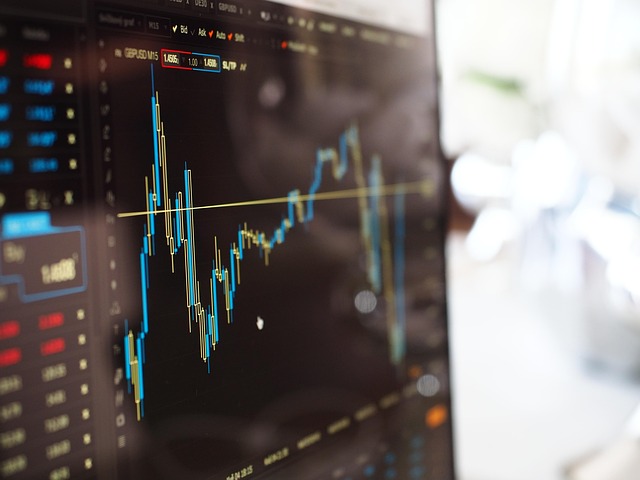What is Trading Volume in Binance and Its Significance in Crypto Trading
Author: Jameson Richman Expert
Published On: 2025-09-17
Prepared by Jameson Richman and our team of experts with over a decade of experience in cryptocurrency and digital asset analysis. Learn more about us.
Understanding what trading volume in Binance entails is fundamental for traders and investors striving to navigate the complex and rapidly evolving cryptocurrency markets. Trading volume measures the total quantity of digital assets exchanged over a predefined period, most commonly over 24 hours. This metric offers crucial insights into market activity, liquidity, investor interest, and potential price movements. On Binance, the world’s largest and most liquid cryptocurrency exchange, trading volume serves as a key indicator for assessing the health and dynamics of various trading pairs. Mastering trading volume analysis allows traders to make data-driven decisions, optimize entry and exit points, and implement effective risk management strategies, ultimately enhancing their trading performance in a highly competitive environment.
At its core, trading volume acts as a comprehensive reflection of market participation, capturing the level of activity from retail traders, institutional investors, market makers, and high-frequency trading algorithms. Elevated trading volume often correlates with increased liquidity, facilitating smoother transactions, narrower bid-ask spreads, and more accurate price discovery. Conversely, low trading volume may reflect market indecision, lack of interest, or potential manipulation risks, which can lead to wider spreads, higher volatility, and false signals. This distinction becomes especially critical on Binance, where thousands of cryptocurrencies—from high-cap assets like Bitcoin and Ethereum to lesser-known altcoins with minimal liquidity—are traded daily. Understanding the nuances of trading volume across these assets can significantly enhance trading strategies and risk assessment.

Deep Dive into Trading Volume and Its Components
Trading volume is a multifaceted metric composed of several interconnected components that provide a holistic view of market activity. These include the total number of assets exchanged, the number of individual trades executed, the size of each trade, and the depth of liquidity within the exchange’s order book. On Binance, trading volume is segmented into different trading modalities—each with distinct implications for traders and market behavior:
- Spot Trading: This involves the immediate exchange of cryptocurrencies at current market prices. Spot trading volume reflects real-time demand and supply dynamics, offering a direct indicator of market interest, liquidity depth, and price stability for specific assets. High spot volume suggests strong investor interest and confidence, often leading to more stable prices and narrower spreads.
- Futures Trading: Futures markets involve trading derivative contracts that speculate on future price movements of cryptocurrencies, often with leverage. Futures trading volumes tend to be significantly higher than spot due to speculative interest, hedging activities, and institutional participation. These volumes influence liquidity, margin requirements, and can amplify price swings, making futures a critical component for understanding market sentiment and potential volatility.
- Options Trading: As a relatively newer addition on Binance, options involve contracts granting traders the right, but not the obligation, to buy or sell an underlying asset at a set price within a specified period. Options volumes provide insights into market expectations of future volatility and direction. Large options trading activity can precede major price moves, revealing shifts in trader sentiment or hedging strategies.
Analyzing these components enriches technical analysis methods. Indicators like Volume-Weighted Average Price (VWAP), On-Balance Volume (OBV), and Chaikin Money Flow (CMF) utilize volume data to confirm price trends, detect divergences, and forecast reversals. For algorithmic traders, recognizing volume patterns—such as sudden spikes, clustering, or anomalies—is essential for designing strategies that can distinguish genuine market momentum from manipulative tactics like spoofing, wash trading, or pump-and-dump schemes.
How to Analyze Trading Volume on Binance
Effective analysis of Binance’s trading volume requires a combination of real-time observation, trend recognition, and contextual interpretation. Traders should start by monitoring the 24-hour trading volume figures displayed prominently alongside each trading pair, which provide an immediate sense of recent activity levels. However, a deeper understanding emerges when analyzing volume trends over multiple timeframes—such as 1-minute, 1-hour, and daily charts—using charting tools integrated within Binance or third-party platforms like TradingView, CoinGecko, or CoinMarketCap.
Key insights include recognizing patterns where rising volume accompanies an upward price trend—indicating strong conviction and a higher likelihood of trend continuation. Conversely, declining volume during a rally may suggest waning momentum and a potential reversal. Similarly, high volume during price declines can often signal panic selling or liquidation events, which sometimes lead to a bounce or consolidation phase. Spotting these signals helps traders avoid false breakouts, trap setups, and optimizes timing for entries and exits.
Order book analysis further enhances volume interpretation. Large buy or sell walls—significant pending orders at specific price levels—are associated with high-volume zones and often serve as psychological support or resistance levels. Combining order book data with candlestick patterns, technical indicators such as RSI, MACD, Bollinger Bands, and trendlines provides a comprehensive view of market sentiment and potential future moves, especially in Binance’s highly volatile environment.
The Role of Trading Volume in Market Sentiment and Price Prediction
Market sentiment within Binance’s ecosystem is heavily influenced by fluctuations in trading volume. Sudden spikes often precede major news releases, macroeconomic data, regulatory announcements, or technological developments. For example, a sharp increase in volume combined with a breakout above resistance levels typically signals strong buying interest, indicating a potential emerging bullish trend. Conversely, elevated volume during a downtrend may reflect panic selling, liquidations, or market liquidation events, often serving as a precursor to reversals or consolidation periods.
Traders use divergence analysis—comparing volume trends with price movements—to forecast potential shifts. For instance, if prices are rising but volume is decreasing, this divergence might suggest waning momentum, warning of a correction or reversal. Advanced tools like volume profile analysis—mapping traded volume at various price levels—help identify high-activity zones called "value areas," which often act as support or resistance. Recognizing these high-interest zones is critical for predicting where future price consolidations or breakouts may occur, enabling traders to make more informed decisions.

Impacts of Trading Volume on Binance’s Liquidity and Price Stability
Liquidity, a fundamental pillar of efficient markets, is directly tied to trading volume. Higher volume ensures that large orders can be executed with minimal slippage, especially during periods of heightened volatility or when trading less-liquid altcoins. Adequate liquidity fosters accurate price discovery, reduces susceptibility to manipulative practices, and stabilizes prices by enabling the market to absorb shocks and large trades without exaggerated fluctuations.
Price stability is also heavily influenced by trading volume. During high-volume periods, price movements tend to be more sustained and reflective of genuine market consensus, thus reducing the impact of pump-and-dump schemes, whale manipulations, or false breakouts. Conversely, low or declining volume correlates with erratic and unpredictable price swings, as limited market depth allows large traders or malicious actors to influence prices disproportionately. Recognizing these dynamics helps traders gauge the reliability of current price levels and craft effective risk mitigation strategies.
How to Use Trading Volume Data for Better Trading Decisions
Incorporating trading volume analysis into your trading strategy enhances decision accuracy and risk management. When evaluating potential trades, verify whether recent price movements are supported by corresponding high volume—this confirms genuine market interest and reduces the likelihood of false signals. Breakouts or breakdowns occurring on low volume should prompt caution, as they may be false positives or preludes to retracements. Conversely, breakouts confirmed by high volume are more likely to be sustained, providing more reliable entry points.
Volume data also plays a crucial role in setting optimal stop-loss and take-profit levels. Recognizing zones of historically high trading activity—such as support and resistance levels—allows traders to position their exits strategically, aligning with actual market interest. For algorithmic trading, embedding volume-based filters and real-time alerts—such as sudden spikes—can improve the quality of signals, especially in Binance’s high-volatility landscape where quick reactions are essential to capitalize on favorable moves or avoid adverse conditions.
The Future of Trading Volume and Cryptocurrency Markets
Looking ahead, the importance of trading volume within Binance and the broader crypto ecosystem is poised to grow exponentially. As decentralized finance (DeFi), non-fungible tokens (NFTs), and layer-2 scaling solutions expand, total trading volumes are expected to increase dramatically. This growth will drive innovation in volume analysis tools, integrating machine learning, artificial intelligence, and big data analytics to parse complex volume patterns and enhance predictive accuracy.
Simultaneously, regulatory scrutiny over trading volume data is intensifying as authorities seek to combat manipulative practices such as wash trading, spoofing, and pump-and-dump schemes. For traders, staying updated on the latest advancements in volume analytics, leveraging Binance’s advanced data and API offerings, and employing transparent metrics will be essential for maintaining a competitive edge, ensuring compliance, and safeguarding investments in an evolving landscape.

Additional Resources and Platforms for Trading and Analysis
For traders aiming to deepen their understanding and refine their strategies, numerous platforms and resources are available. Binance’s official platform provides comprehensive real-time trading volume data, advanced charting tools, and market insights—accessible through this registration link. Additionally, third-party platforms like MEXC, BitGet, and Bybit offer sophisticated trading environments with detailed volume metrics, order book insights, and real-time alerts to support strategic decision-making. They also provide historical data analysis, volume heatmaps, and AI-driven predictive tools that can help traders identify emerging trends more accurately.
For automation enthusiasts, guides such as this comprehensive guide illustrate how trading bots utilize volume data to optimize execution and improve profitability. Moreover, staying updated on regulatory changes, industry analyses, and technological developments—via resources like industry leader reviews and bonus offers—can provide valuable insights to maintain a competitive edge in the dynamic crypto trading landscape.